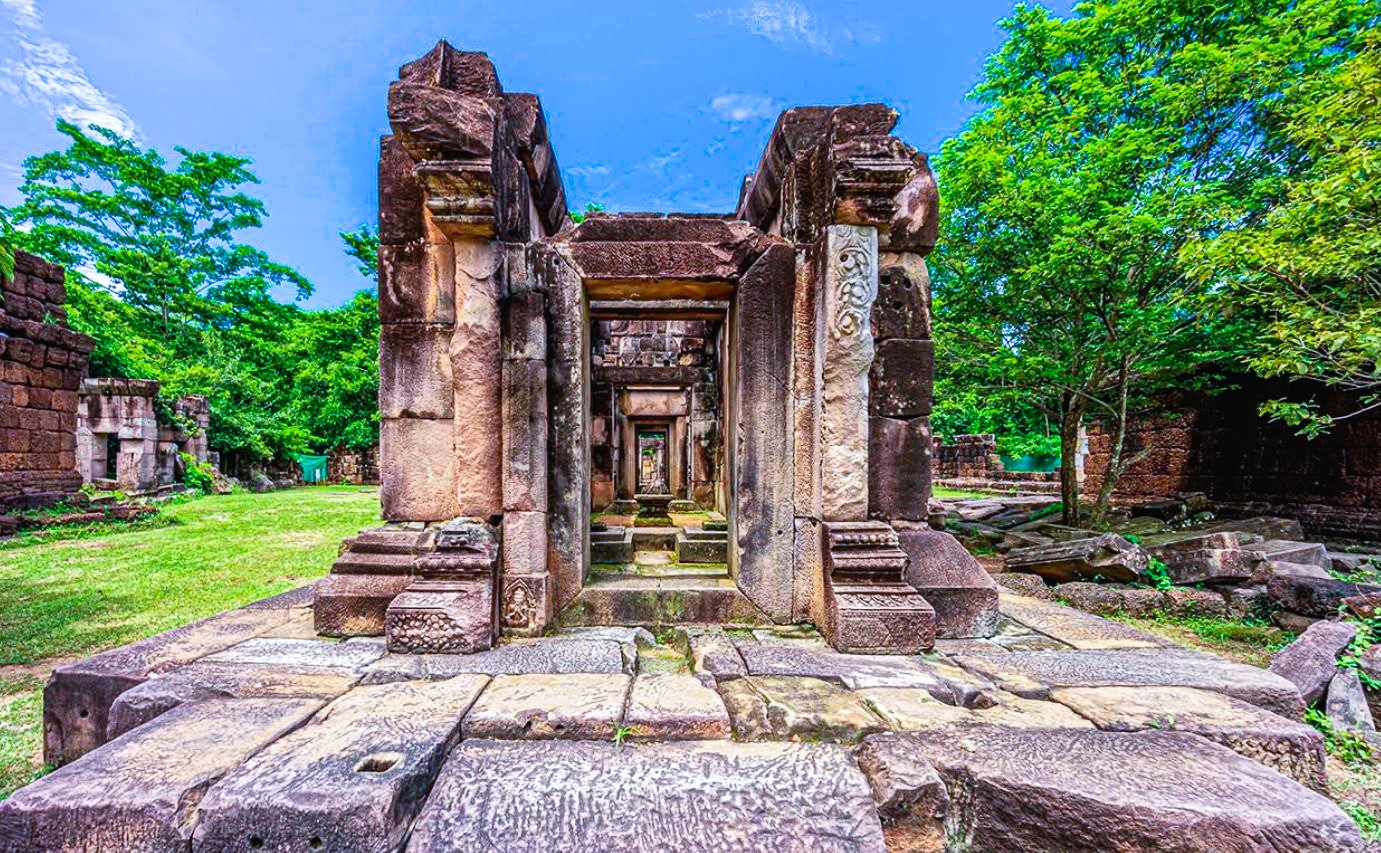Prasat Ta Muan Thom is an ancient Khmer temple complex located on the border between Thailand and Cambodia. Built during the height of the Khmer Empire, this historical site served as both a religious sanctuary and a rest house for travelers along the ancient road connecting Angkor to other major cities. The temple is part of a larger network of Khmer ruins in the region, showcasing the architectural brilliance and cultural influence of the empire.
Though less famous than Angkor Wat or Phanom Rung, Prasat Ta Muan Thom holds significant historical and archaeological value. Its remote location adds to its mystique, making it a fascinating destination for history enthusiasts and travelers seeking off-the-beaten-path experiences.
History of Prasat Ta Muan Thom
Prasat Ta Muan Thom dates back to the late 12th to early 13th century, during the reign of King Udayadityavarman II, one of the Khmer Empire’s most powerful monarchs. The temple was constructed as part of a series of rest stops (known as dharmasala) and hospitals (arogayasala) along the ancient highways connecting Angkor (in present-day Cambodia) to outlying provinces.
The temple was dedicated to Mahayana Buddhism, which was prevalent during Jayavarman VII’s rule. Its design follows the classic Bayon style, characterized by intricate carvings, lintels depicting Hindu and Buddhist motifs, and the use of laterite and sandstone.
Over the centuries, the temple fell into disrepair and was largely forgotten until modern archaeological efforts brought it back into the spotlight. Due to its location near the Thai-Cambodian border, it has also been a point of historical and political discussion, with both countries recognizing its cultural significance.
Location and Surroundings
Prasat Ta Muan Thom is situated in the Phanom Dong Rak district of Surin Province, Thailand, near the Cambodian border. It stands on the Dangrek Mountain range, which forms a natural boundary between the two countries. The temple is part of a cluster of Khmer ruins in the area, including:
Prasat Ta Muan Toch – A smaller sanctuary located downhill, believed to have been a healing house.
Prasat Ta Muan (in Cambodia) – Another connected structure on the Cambodian side.
The surrounding landscape is lush and mountainous, offering scenic views of the border region. Due to its elevated position, the site provides a strategic vantage point, which may have contributed to its historical importance as a military outpost in later periods.
How to Visit Prasat Ta Muan Thom
Getting There
Prasat Ta Muan Thom is relatively remote, so planning ahead is essential. The most common starting point is Surin City in Thailand.
By Car
- From Bangkok, take Highway 24 towards Surin (about 450 km, 6-7 hours).
- From Surin City, head south towards Kap Choeng district, then follow signs to Ta Muan Temple (approx. 80 km, 1.5 hours).
The final stretch involves a steep uphill drive, so a sturdy vehicle is recommended.
By Public Transport
Take a bus from Bangkok to Surin, then hire a taxi or songthaew (shared pickup truck) to the temple.
Alternatively, join a guided tour from Surin or nearby provinces like Buriram or Sisaket.
Best Time to Visit
Cool Season (November – February) – Ideal for exploring, with pleasant temperatures.
Avoid Rainy Season (June – October) – The roads can become slippery and difficult to navigate.
Entry and Fees
- The temple is open daily from 8:00 AM to 4:30 PM.
- There is no entrance fee, but donations for maintenance are appreciated.
- Visitors should carry water, sunscreen, and wear comfortable shoes for climbing.
What to See
Main Sanctuary – The central prang (tower) built of laterite and sandstone, featuring intricate carvings.
Ancient Pathways – Remnants of the old Khmer road leading to other temple sites.
Boundary Views – Panoramic sights of the Thai-Cambodian border.
Nearby Ruins – Explore Prasat Ta Muan Toch and other smaller structures in the vicinity.
Cultural and Political Significance
Due to its border location, Prasat Ta Muan Thom has been part of territorial discussions between Thailand and Cambodia. In the past, disputes over land ownership led to temporary closures, but today, the site remains accessible to tourists from the Thai side.
The temple is a testament to the shared cultural heritage of the Khmer Empire, which once dominated much of Southeast Asia. Efforts by both Thai and Cambodian authorities have helped preserve the site, recognizing its importance in regional history.
Tips for Visitors
- Respect the Site – Avoid touching carvings or climbing on fragile structures.
- Local Guides – Hiring a guide can provide deeper insights into the temple’s history.
- Border Regulations – Do not cross into Cambodian territory without proper documentation.
- Nearby Attractions – Combine your trip with visits to other Khmer temples like Phanom Rung or Sikhoraphum.
Conclusion
Prasat Ta Muan Thom is a remarkable yet underrated archaeological treasure, offering a glimpse into the grandeur of the Khmer Empire. Its remote location, historical significance, and stunning architecture make it a rewarding destination for those willing to venture off the typical tourist trail. Whether you're a history buff, an adventure seeker, or simply curious about Southeast Asia’s ancient past, this temple is well worth the journey.
Plan your visit, soak in the rich heritage, and discover the hidden stories of Prasat Ta Muan Thom—a true gem of Khmer civilization.


